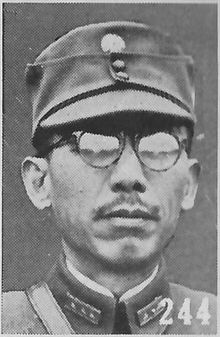Tang Shengzhi
| Tang Shengzhi | |
|---|---|

Tang Shengzhi
|
|
| Born | 1889 Dong'an County, Hunan |
| Died | 1970 Changsha, Hunan |
| Allegiance |
|
| Years of service | 1914–1949 |
| Rank | general |
| Unit | fourth division |
| Commands held | Garrison Commander of Nanjing |
| Battles/wars | Northern Expedition, Battle of Central Plains, Second Sino-Japanese War, Chinese Civil War |
| Awards | Order of Blue Sky and White Sun |
| Other work | politician |
Tang Shengzhi (唐生智) (Wade-Giles: Tang Sheng-chih) (1889 – April 6, 1970) was a Chinese warlord during the Warlord Era, a military commander during the Second Sino-Japanese War, and a politician after World War II.
After participating in the Xinhai Revolution, Tang graduated from the Baoding Military Academy in 1914. He participated in the National Protection War, and Constitutional Protection Movement. Tang Shengzhi was appointed commander of the Hunan Fourth Division and came into conflict with the governor Zhao Hengti. He was defeated and forced to withdraw from Changsha and decided to join the Northern Expeditionary Army and was given command of the Eighth Army of the National Revolutionary Army. By 2 June 1926 his troops had reoccupied Changsha. On 11 March 1926 Tang Shengzhi became the military and civil governor of Hunan from the execution of the former provincial military commander, Li Youwen. While his military office ended 14 July 1926 once his province had been secured, he remained as civil governor until April 1927.
Tang sided with Chiang Kai-shek and helped him to secure the control of northern Beijing and Tianjin region by removing Bai Chongxi, a Guangxi warlord who was in actual control of the region but ostensively allied with Chiang Kai-shek. Later, Tang commanded armies to fight other warlords for Chiang Kai-shek with great success. However, after these potential rivals were defeated, Chiang Kai-shek enraged Tang when he attempted to remove Tang, and as a result, Tang defected to warlords in Guangxi and Guangdong to help them to fight Chiang Kai-shek.
...
Wikipedia
